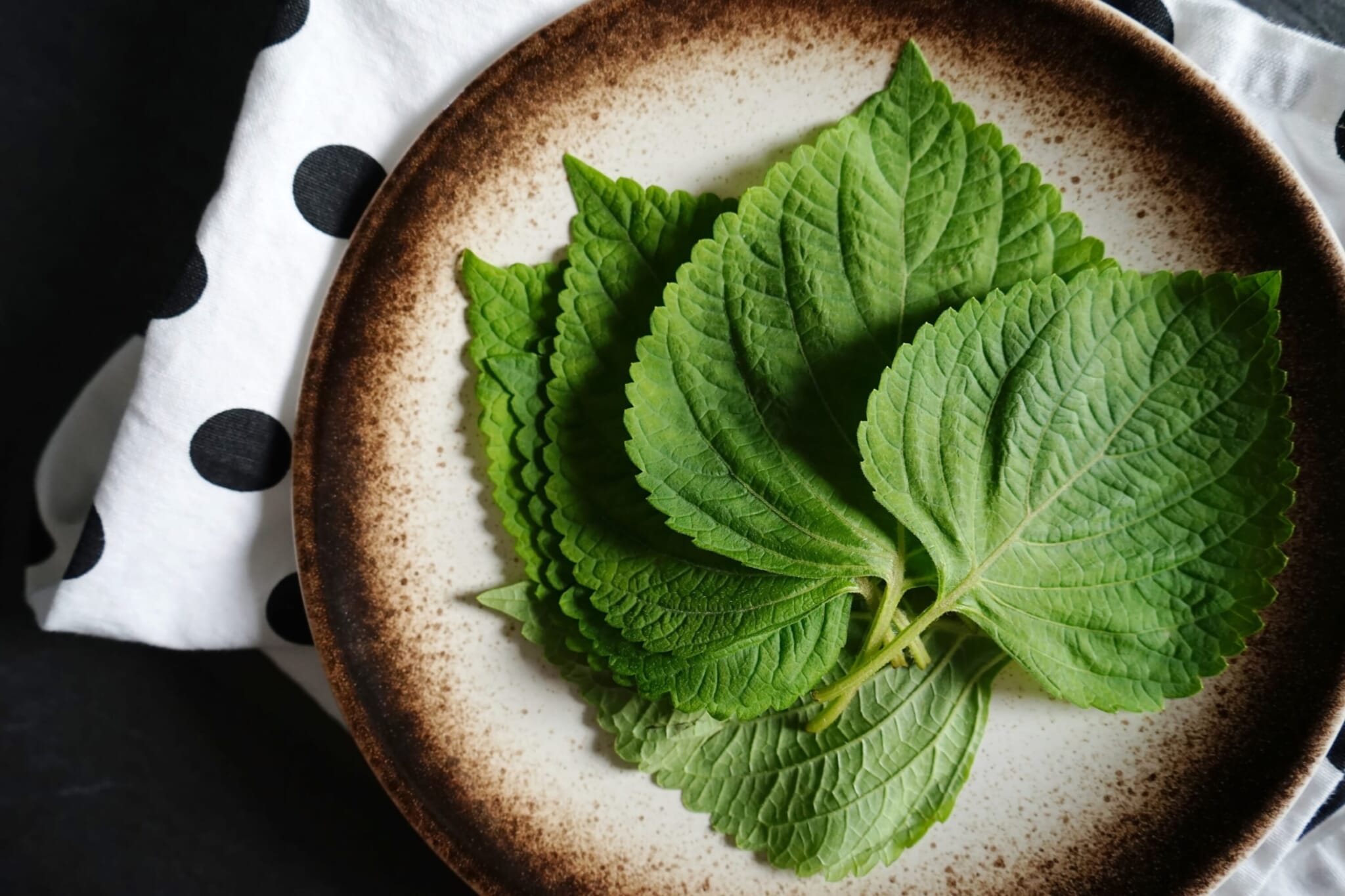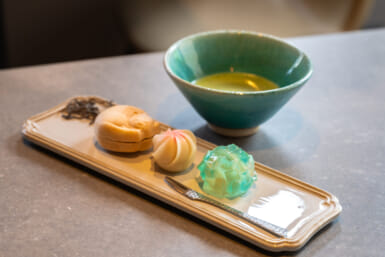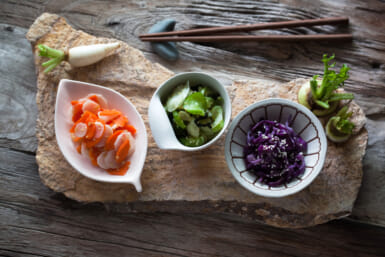The Origins and History of Shiso
Like many Japanese staples, shiso made its way to the Japanese archipelago through trade with Chinese merchants. It was introduced to Japan in the eighth or ninth century, but not as a cooking ingredient. Instead, its seeds were used to make oil to power lamps. It wasn’t until the properties of its leaves were discovered that shiso was slowly incorporated into cooking. Shiso’s distinct fragrance is because it too is a member of the mint family — even though it is decidedly different in smell, you can pick up a small hint of menthol if you give it a long, deep sniff.
While shiso is common across many southern Asian cuisines, nowadays, it is predominantly associated with Japanese food. This may in part be thanks to its antiseptic properties, acting to combat food poisoning, which can come from eating raw fish. Many sushi dishes come with a shiso leaf, and slices of sashimi may be wrapped snugly in a shiso blanket before being dipped in soy sauce as a rite of passage. There are various other uses for shiso, all of which we’ll get to later.
Same Plant, Different Name
Shiso has many different names, which can be confusing, especially if one is in Japan and hopes to use the ingredient frequently.
- Oba: When I first arrived and worked at a soba restaurant, I was introduced to a big green leaf called oba. At the time, while cutting slivers of oba to top the bowls of piping soba noodles along with yuzu, I had no idea that oba was the same as shiso. It is. Oba is just another way of naming green shiso leaves — its literal translation is “big leaf.”
- Perilla: The origins of the name come from its official name in Latin, which was used to introduce the plant to the West in the mid-1800s.
So, head to a supermarket in Japan or abroad and you may encounter shiso, perilla and oba, all of which refer to the same thing. Generally speaking, perilla is used for red shiso and oba is used for large green leaves. That moves us nicely onto the next topic: different types of shiso.
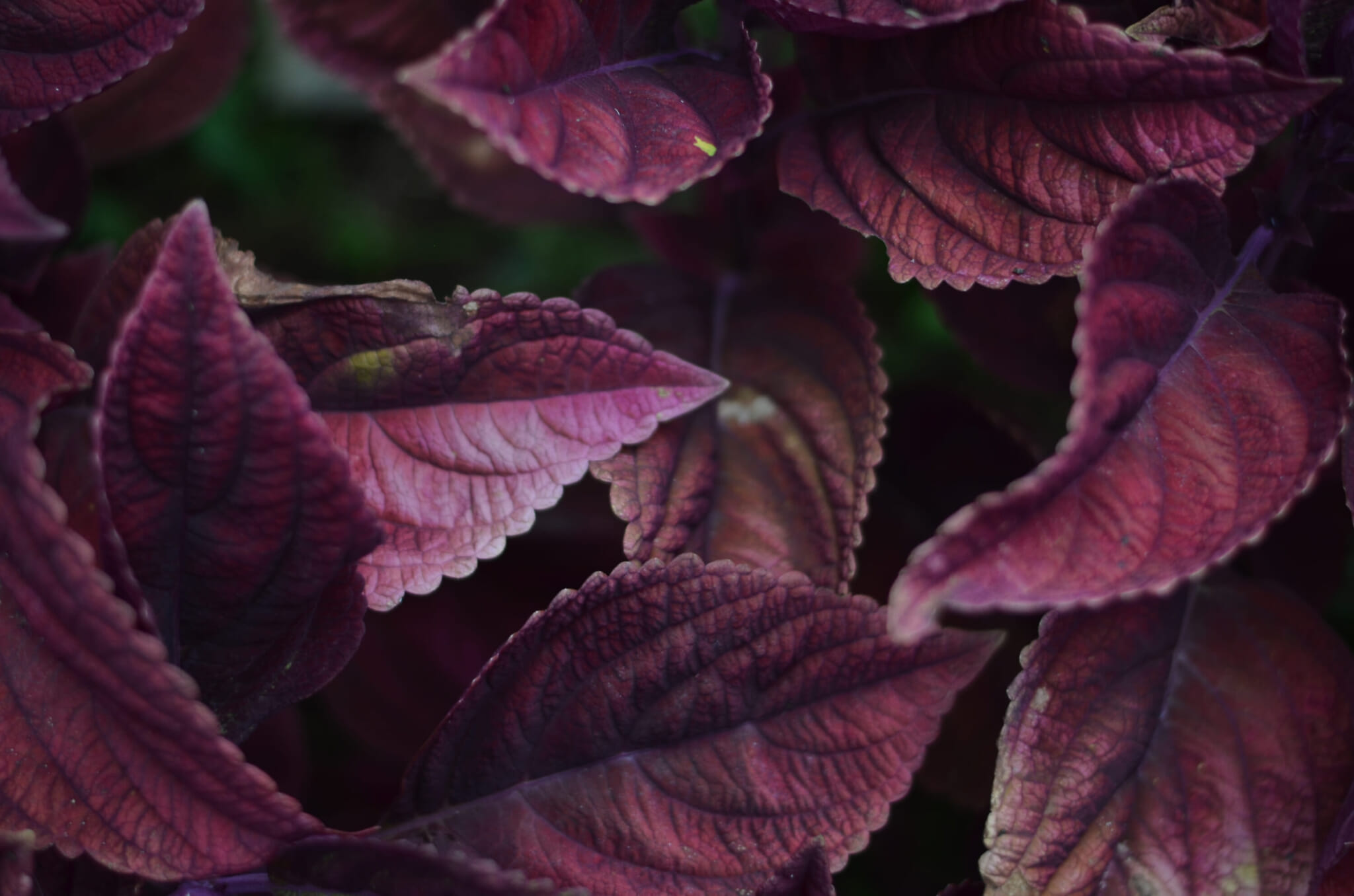
Types of Shiso
There are two main types of shiso: red and green.
Red shiso (or purple shiso) is thicker and the more bitter of the two. It is often used to color foods and for pickling, lending its deep color to Japanese pickled plums and even neon-pink shiso juice. Green shiso, on the other hand, is the one you’ll encounter served alongside your sushi and sashimi. Its soft, fragrant leaves add a unique flavor to complement the fish. It’s also used to top certain dishes as a symbolic palate cleanser.
What Does Shiso Taste Like?
Raw shiso leaves taste refreshingly bitter, with hints of cinnamon and menthol. There’s a good reason shiso is sometimes referred to as a “Japanese mint.”
When shiso is dried or cooked, it loses much of its flavor, which is why it is most often used raw in Japanese cooking. For pickled ingredients such as umeboshi, raw red shiso leaves are added to the pickling juice. This is both for color and flavor.
Health Benefits
Shiso has many health benefits because it is high in calcium and iron. It’s said to be good for the skin, and in Japan, the herb is traditionally used when brewing herbal tea for this very purpose.
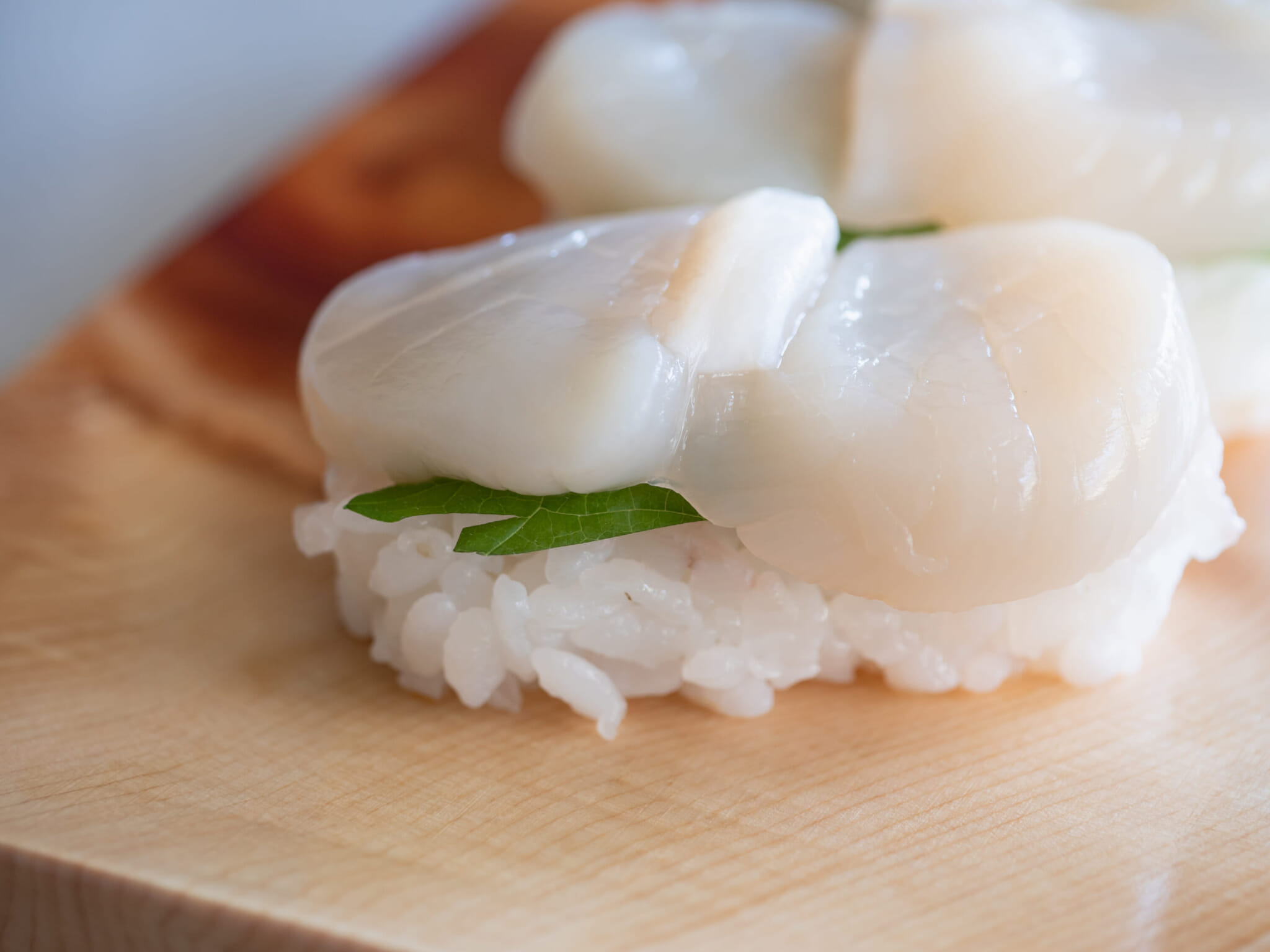
Shiso Uses and Recipes of Note
Shiso is found everywhere in Japanese cooking, so we’ll introduce its main uses.
Raw Green Leaves: Sashimi and Sushi
The sashimi you find in Japan comes with the standard soy sauce, wasabi and green shiso leaves. This set allows maximum enjoyment when eating fresh fish.
Sushi is served alongside temaki, which is a type of DIY sushi roll where you place a plate of seaweed (or shiso) in your hand and pile ingredients straight on it. In this context, shiso is either prepared:
- Sliced, as a filling for temaki sushi.
- Whole, straight into your hand, ready to be a wrap once filled, like a teeny tiny burrito.
The sushi selections that are sold pre-made in supermarkets even contain fake shiso. The jagged green separators are designed to mimic recognizable shiso leaves.
Dried Red Shiso: Furikake
Red shiso, often called perilla, especially in the West, is used for its taste and color in a variety of Japanese furikake. Special red shiso is dried and ground to create a type of traditional furikake called yukari. Yukari is popular as a tangy seasoning for salads and as a topping for rice.
Raw Red Shiso: Juice and Pickling
Red shiso is also used to create a neon pink juice with a tart flavor. To make this, shiso is mixed with sugar and steeped in water or another liquid of choice — fizzy water and hot water are also popular. The drink is great for the summer with lots of ice, topped with sliced lemon for a color pop.
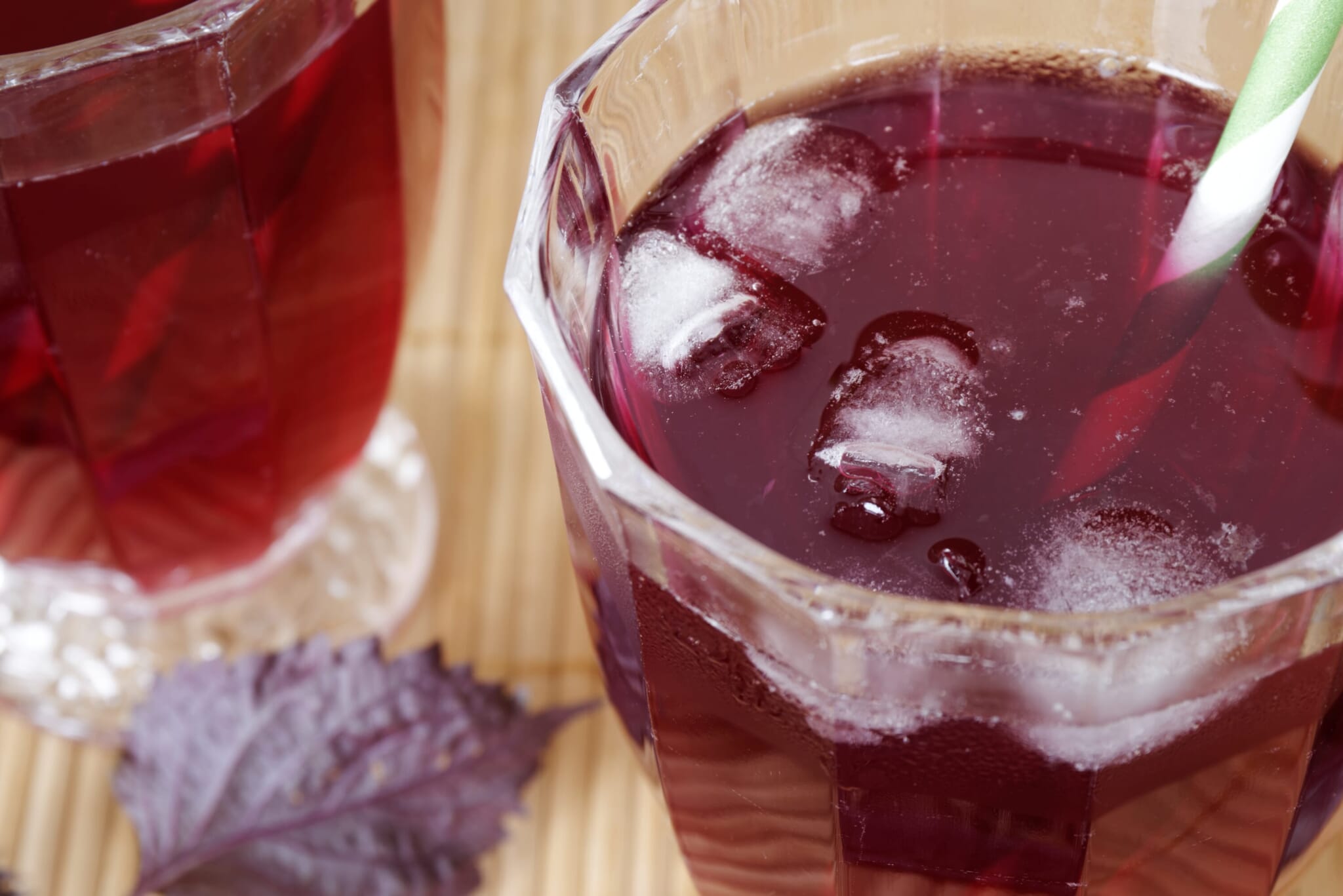
Where to Find and Buy Shiso
If you’re in Japan, getting hold of any type of shiso is super easy. Almost too easy, as it comes in packs starting from 10 leaves, which can be hard to finish. Shiso can be kept for longer between wet paper towels in the fridge. Remember to keep an eye out for all its names. For readers outside of Japan, your best bet is to check out the local Asian grocery store.
Shiso also comes in tubes, often mixed with ume for sushi or as a topping. Budding farmers, rejoice, as it is also relatively easy to grow, so if you’re craving shiso for a recipe, plant some seeds in preparation for next year’s harvest.

